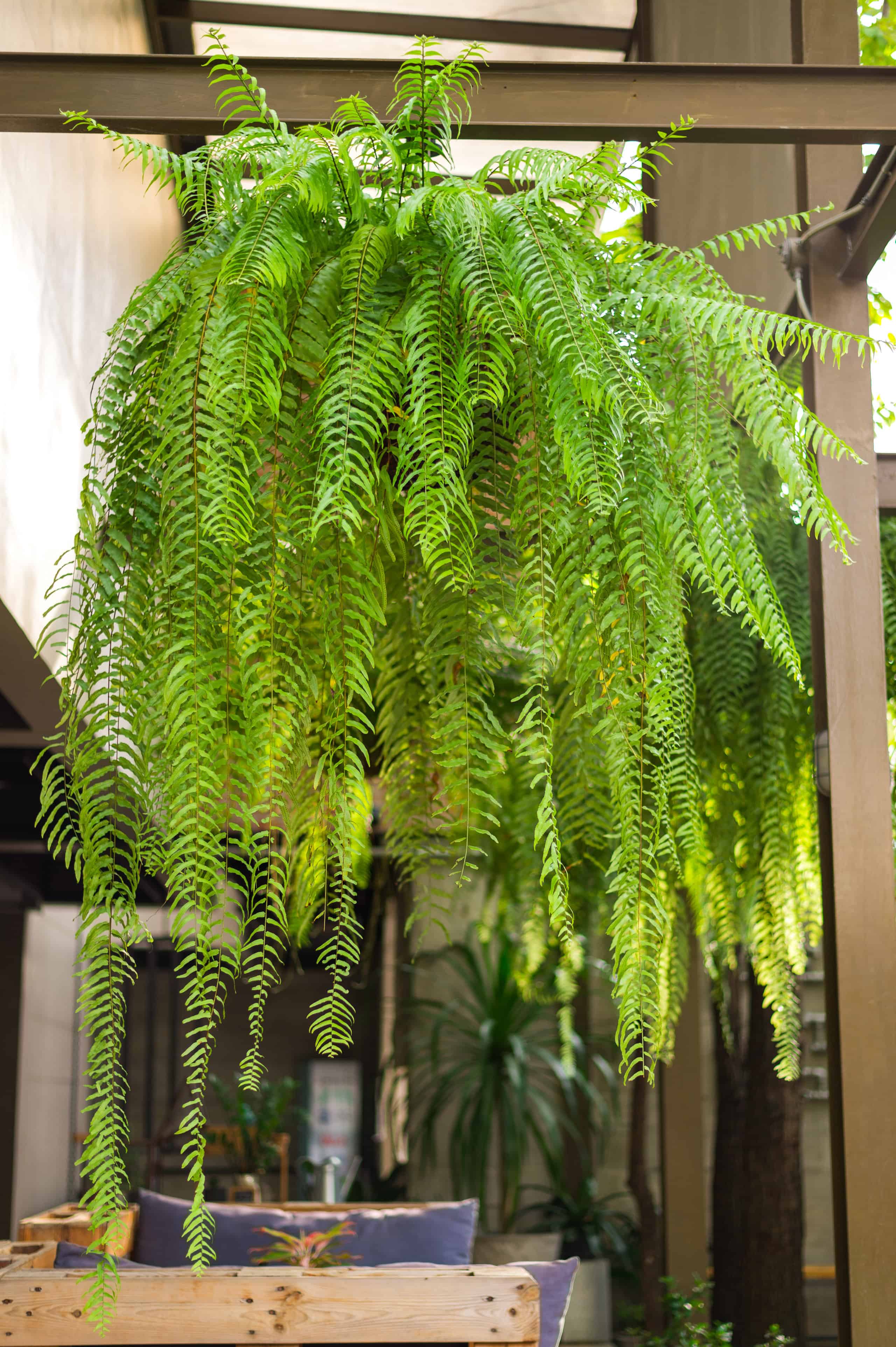Do you have a green thumb and you’re looking for a challenge? Not all houseplants are low-maintenance, some require additional steps and care. Listed below we have 10 houseplants that look amazing but are hard to maintain. However, with patience, and extra care, you can add new and unique houseplants to your collection!
1. Maidenhair Fern
The first difficult, but beautiful houseplant on our list is the maidenhair fern, specifically the Southern maidenhair fern. The scientific name for this fern is Adiantum capillus-veneris. In its native range, this plant species’ population is listed as Least Concern on the IUCN Red List. Southern maidenhair ferns are popular houseplants throughout the world. They have a massive range and can be found throughout the southern half of the United States from California to the Atlantic coast, through Mexico and Central America, to South America. This plant species is also native to Eurasia. Southern maidenhair ferns reach about 6 to 12 inches long. It also spread quickly. Still, as lovely as this fern is, it’s tricky to grow. They like bright indirect light. However, too much sunlight can burn the leaves and a lack of light leads to yellowing leaves.
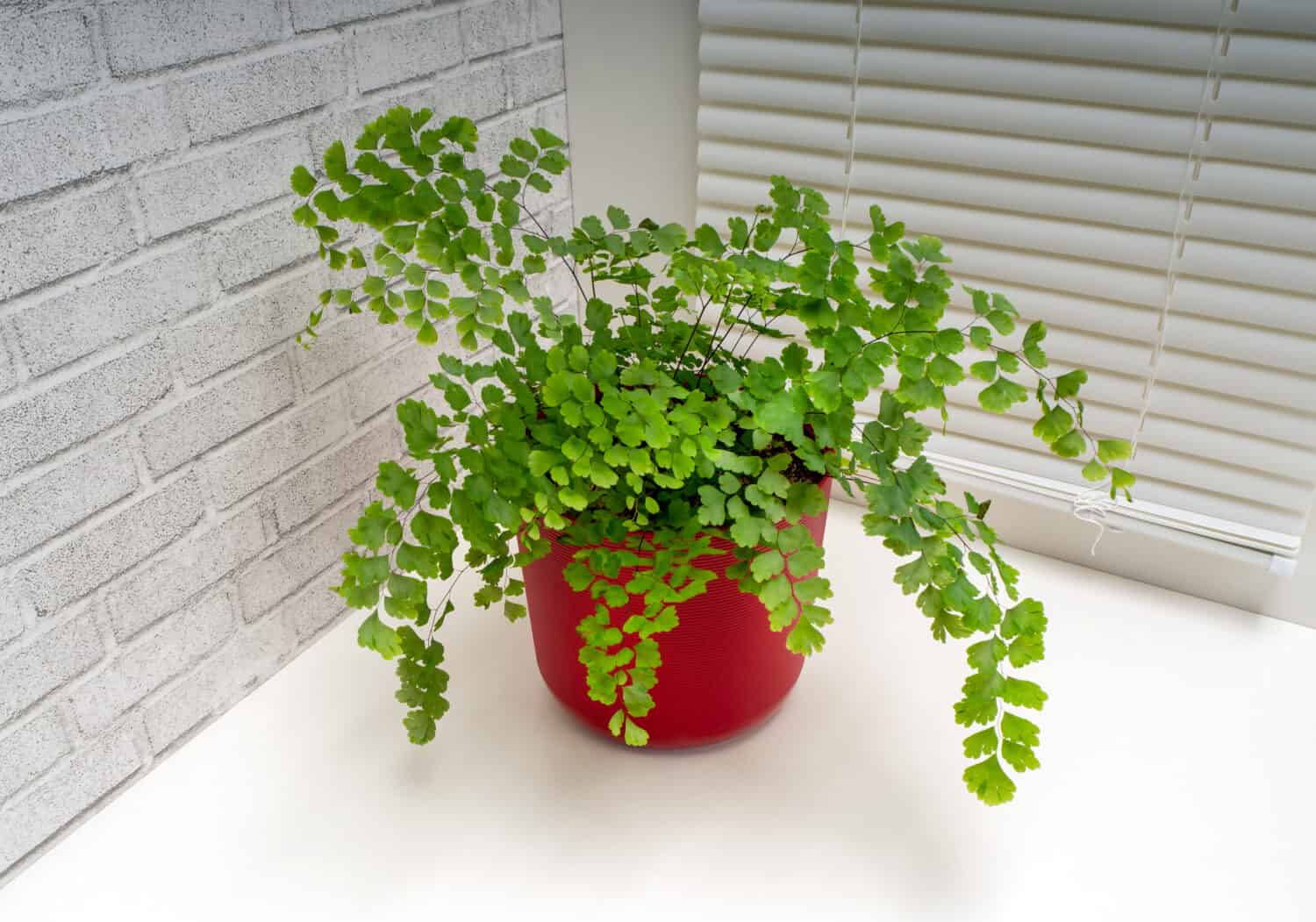
The maidenhair fern is a genus of plants. Some species within this genus are tricky to grow.
©Elzloy/Shutterstock.com
2. Fiddle Leaf Fig
The fiddle leaf fig plant is also hard to maintain. This amazing houseplant is picky and temperamental. If it’s too cold, the fiddle leaf fig plant can shrivel up or simply stop growing. Fiddle leaf figs are easy to accidentally over or under water. One of the most important things this plant requires is bright, indirect light. Find a window that receives over 6 hours of bright sunshine. You can use a grow light, but it needs to be on for longer than 6 hours and intense. Fiddle leaf figs also need to be cleaned. Meaning, that if you’re growing this lovely plant indoors, you’ll need to avoid accumulating dust and dander as this can stress the plant out.

Fiddle leaf figs are tricky houseplants that require light watering and bright, indirect sunlight.
©Rachata Teyparsit/Shutterstock.com
3. Prayer Plant
The prayer plant is a popular houseplant native to the Brazilian tropical forests. The scientific name for the plant is Maranta leuconeura. This perennial produces striking oval leaves that can reach up to 5 inches long. During the day, the leaves lie flat and ‘rise’ in the evening, resembling prayer. Although prayer plants can produce little white flowers it’s rare indoors. The most stunning part about the prayer plant is its uniquely marked large oval leaves. These tropical plants can be tricky to maintain. They require warm outdoor weather, but not direct sunlight. They also need high humidity and filtered, or rainwater to thrive.
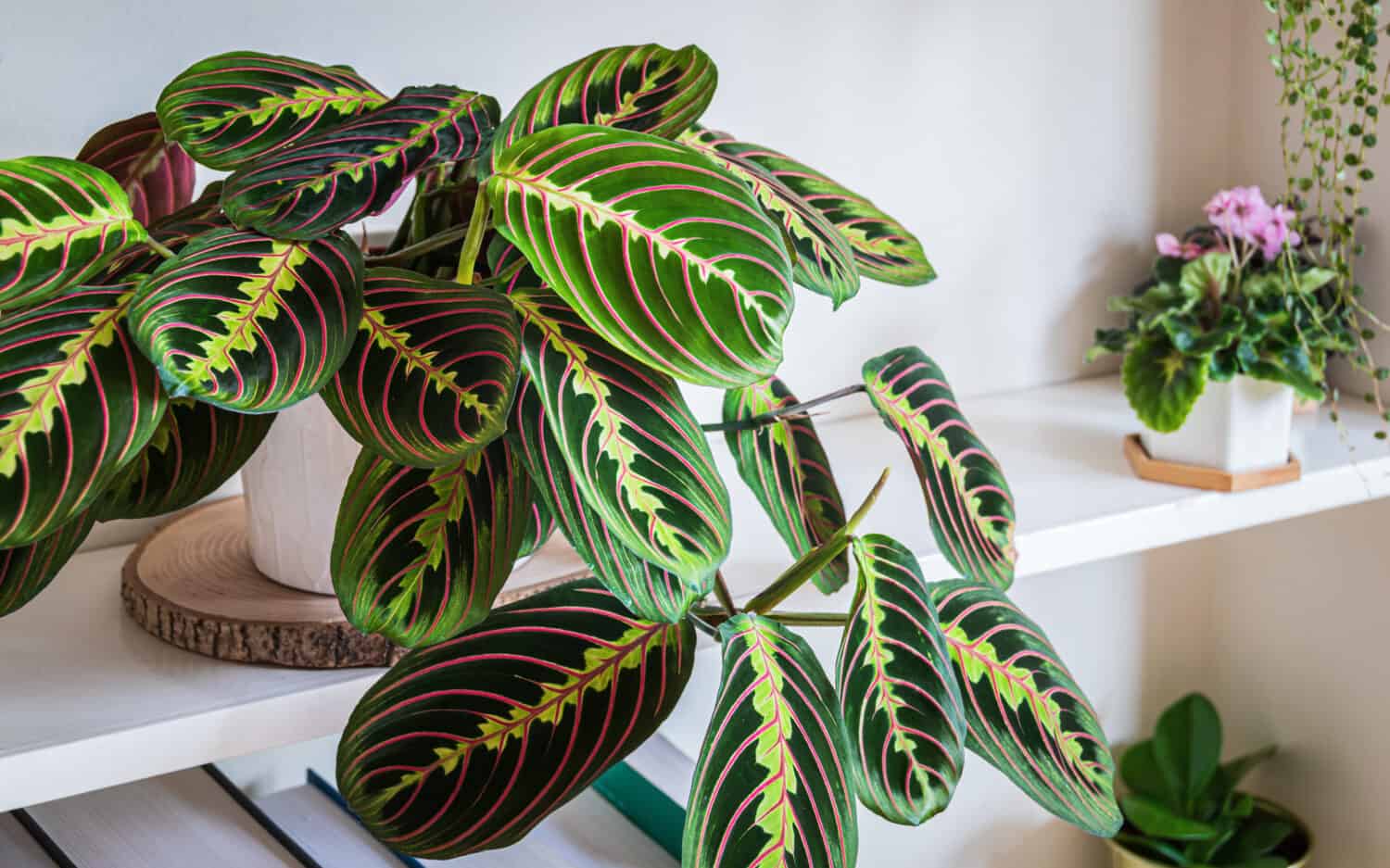
Prayer plants thrive in tropical climates. They are common houseplants, known for their ‘praying’ leaves.
©Maritxu/Shutterstock.com
4. Inch Plant
Another challenging plant to make our list of houseplants that look amazing but are hard to maintain is the inch plant, also known by its scientific name, Tradescantia zebrina. Although tricky to grow, it’s well worth the challenge. These lovely, bright, and eye-catching plants produce purple, green, and blueish-grey zebra-patterned leaves. New growth is typically bright pink. There are dozens of cultivars and types ranging in size and coloration. These popular houseplants are also sometimes grown in gardens as groundcover. They quickly spread if not maintained. Some people think they are easy plants to grow, but it depends on the environment. Pruning is what makes this plant tough to maintain.
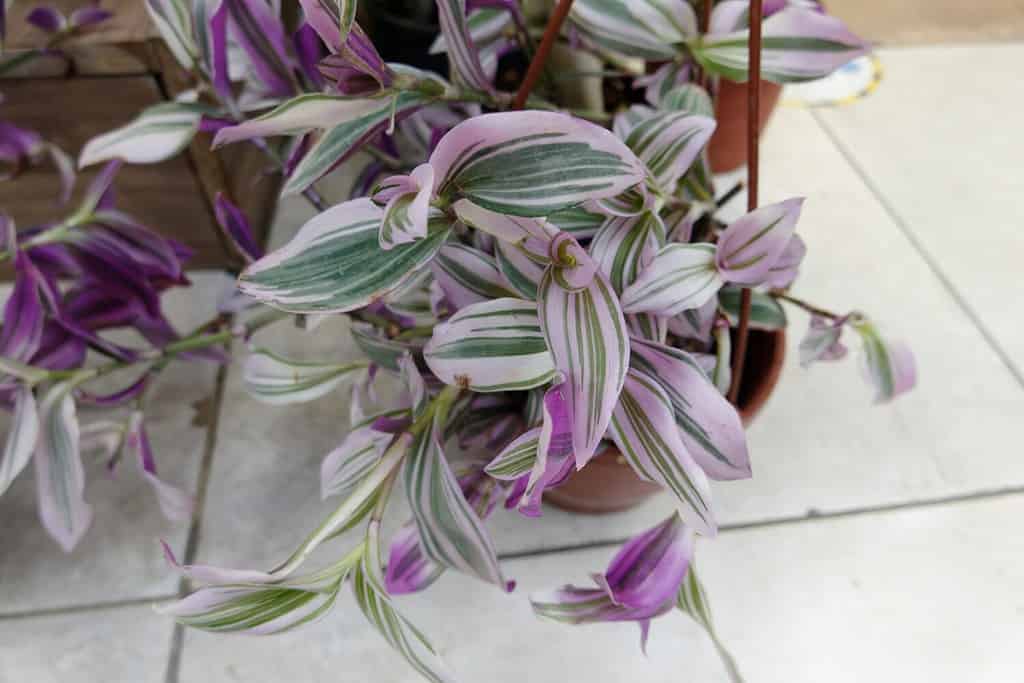
Inch plants can be tricky to grow because of how out of control they can quickly spread. Pruning and grooming is necessary.
©Burhan Oral GUDU/Shutterstock.com
5. Venus Flytrap
Venus flytraps are one of the coolest plants to grow indoors. These amazing plants are lively, and uniquely shaped, but are difficult to keep alive. Sometimes, the more attention you give your Venus flytrap, the harder they struggle. Venus flytraps are carnivorous plants. They attract insects and trap them in their ‘mouths’. So, what makes them so difficult?
Venus flytraps are hard to maintain because of their picky eating habits. These lovely carnivorous plants are nothing like you see on television. They don’t need to eat multiple times a week, large insects. Instead, you should only feed a Venus flytrap once every week or two. They can even go as much as a month without eating a bug. Sadly, while commonly sold in nurseries and garden stores, Venus flytraps are listed as Vulnerable in their native range.
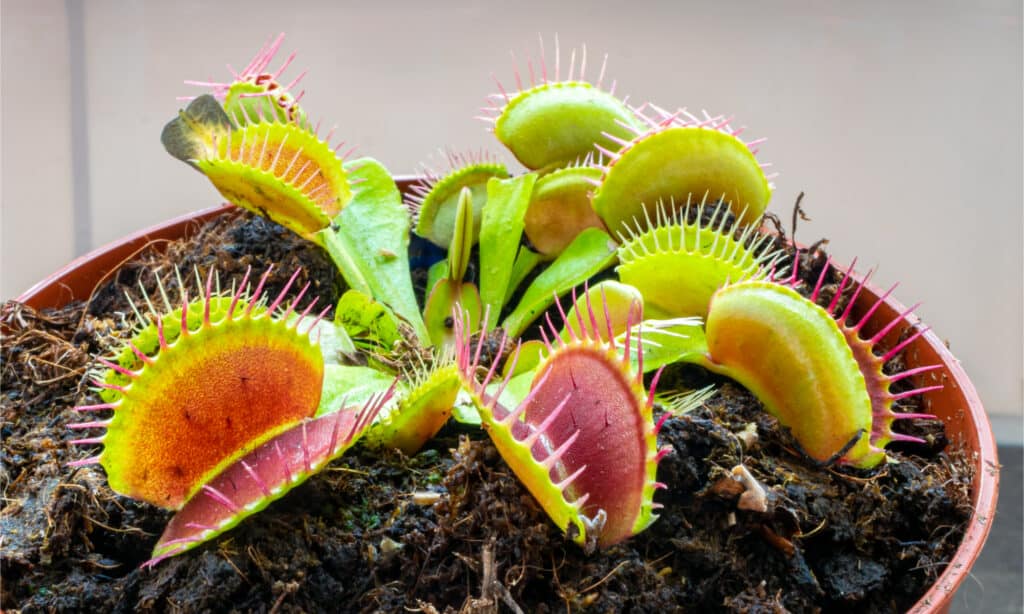
Venus flytraps are houseplants that look amazing but are tricky to maintain. In the right conditions though, a Venus flytrap can live for about 20 years.
©Menno van der Haven/Shutterstock.com
6. Boston Fern
The 6th hardest to maintain plant on our list is the Boston fern. This lovely fern is also called the sword fern. It’s a vibrant green plant native to the Americas. In the right conditions, this plant can easily reach up to 35 inches tall. Boston ferns are favorites for many gardeners. They can be grown outside in the ground and hanging containers. You can even grow them inside, but they have a few challenges. Boston ferns need the right amount of light, water, and humidity. They require high humidity and damp soil.
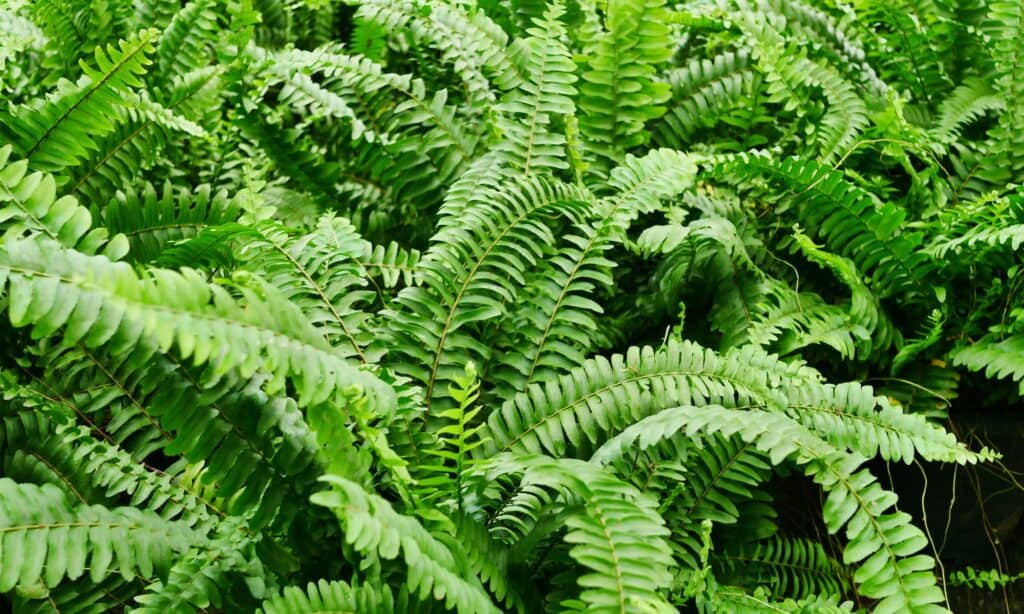
Boston ferns thrive in high humidity.
©iStock.com/Supersmario
7. String of Pearls
Another hard-to-maintain, but amazing-looking houseplant is the string of pearls. The string of pearls is a lovely and delicate succulent known for its strange bead or pearl-like leaves. This vining plant is native to the drier parts of southwest Africa. However, it’s spread throughout the world as a popular houseplant. String of pearls can be hard to take care of as they are low-maintenance plants that require dry conditions. They don’t need a lot of water. Too much water can stress your string of pearls out and cause it to die or stop growing.

String of pearls are lovely vining succulents native to dry parts of southwest Africa.
©iStock.com/Tatyana Consaul
8. Echeveria
Have you ever heard of the Echeveria? It’s a large genus of flowering plants in the family Crassulaceae. These lovely succulents have a wide native range. Their native range includes semi-desert areas of Central America, Mexico, and northwestern South America.
These lovely plants grow well indoors and outdoors but are also picky. Too much water can kill them or result in nasty pests. The difficulty depends on the species. One of the hardest and most uncommon Echeveria species is the Echeveria laui. It’s rare, slow-growing, and susceptible to a large list of pests and diseases.

One of the hardest
Echeveriaplants to grow is the
Echeveria Laui.
©Oleksii Maznychenko/Shutterstock.com
9. Miniature Rose
Another difficult, but well worth challenge is miniature roses. Although they do best outside, you can grow them indoors as houseplants. Miniature roses are carefully bred to stay small. They are wonderful plants that bring a pop of color to any space. Although miniature roses aren’t incredibly difficult to grow, they have some challenges.
For instance, some miniature rose varieties struggle with pests and diseases like black spots or powdery mildew. This is because the flowers require generous watering, but while indoors, can develop mold and fungus with a lack of air circulation. To combat this, you can purchase a fan and place it next to your miniature roses to provide airflow. They may also suffer from spider mites.
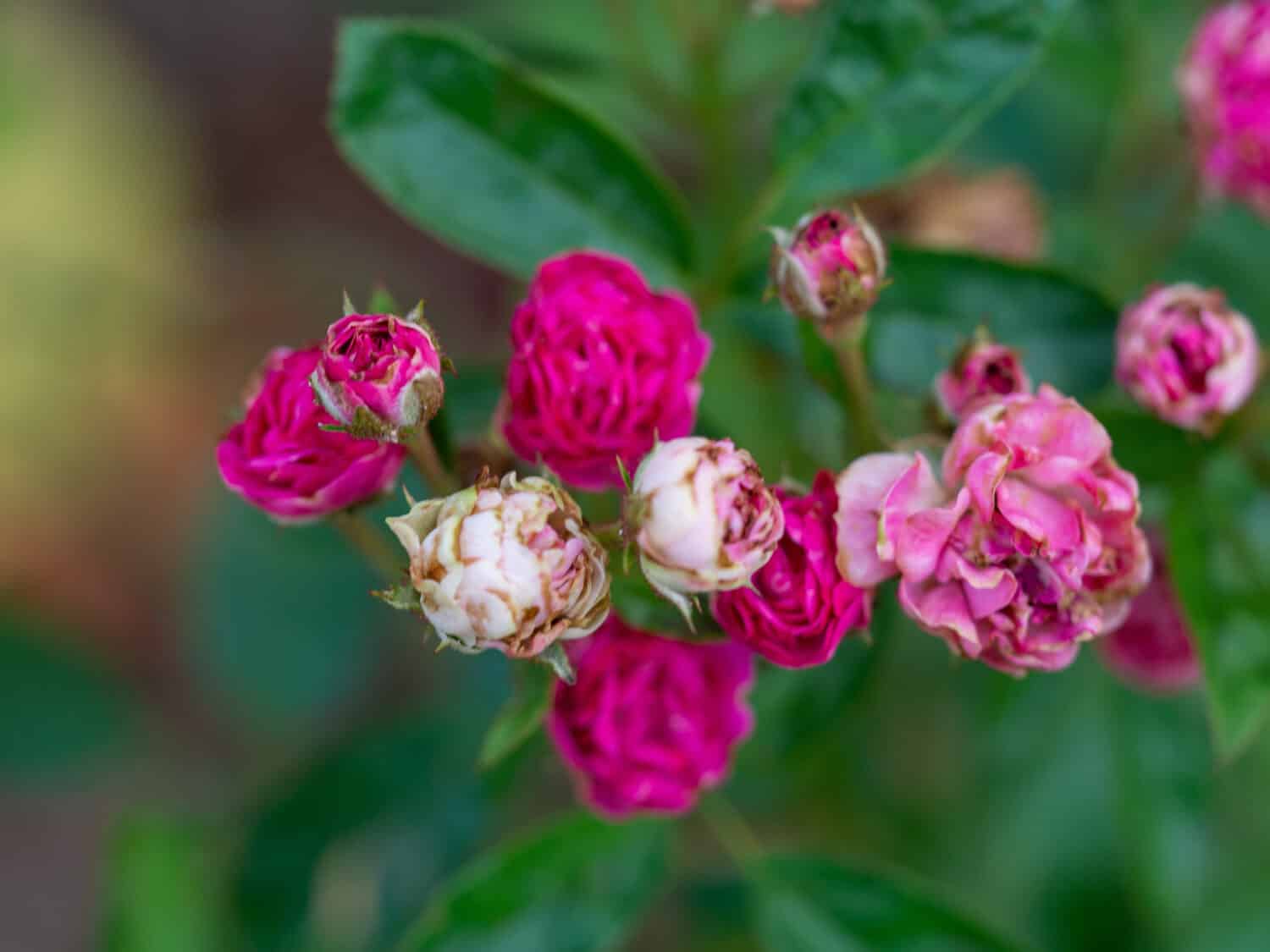
Miniature roses may suffer from pests like spider mites.
©Wachiraphorn Thongya/Shutterstock.com
10. Calathea
Last but not least is the Calathea, which is a genus of flowering plants belonging to the family Marantaceae. They are sometimes also called prayer plants, like their relatives. Calathea plants are native to the tropical Americas. Experts still debate exactly how many species of Calathea plants there are, some lean towards 60, while others estimate there are up to 200. However, some former species have been assigned to the genus, Goeppertia.
These lovely plants are common houseplants known for their colorful decorative leaves and eye-catching inflorescences. Some popular cultivars include Calathea zebrina, Calathea ‘Eclipse’, and Calathea makoyana. Calathea plants tend to be difficult for their specific needs. They require warm temperatures, but indirect light. Too much light can burn and damage the leaves.
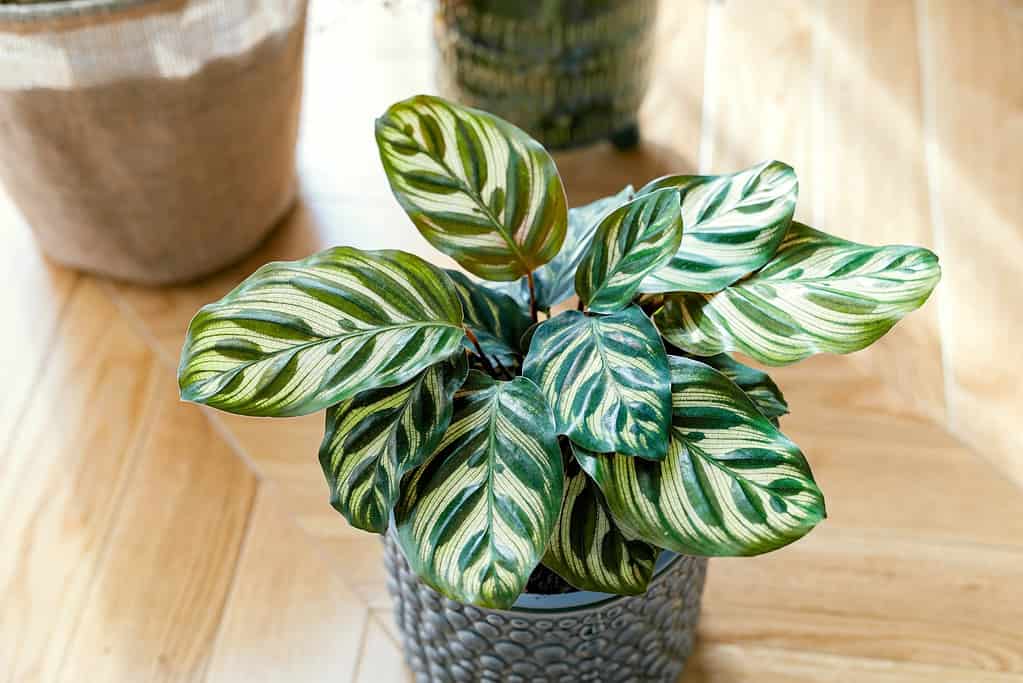
is a genus of flowering plants belonging to the family Marantaceae. They are very popular houseplants.
©Damian Lugowski/iStock via Getty Images
Thank you for reading! Have some feedback for us? Contact the AZ Animals editorial team.

